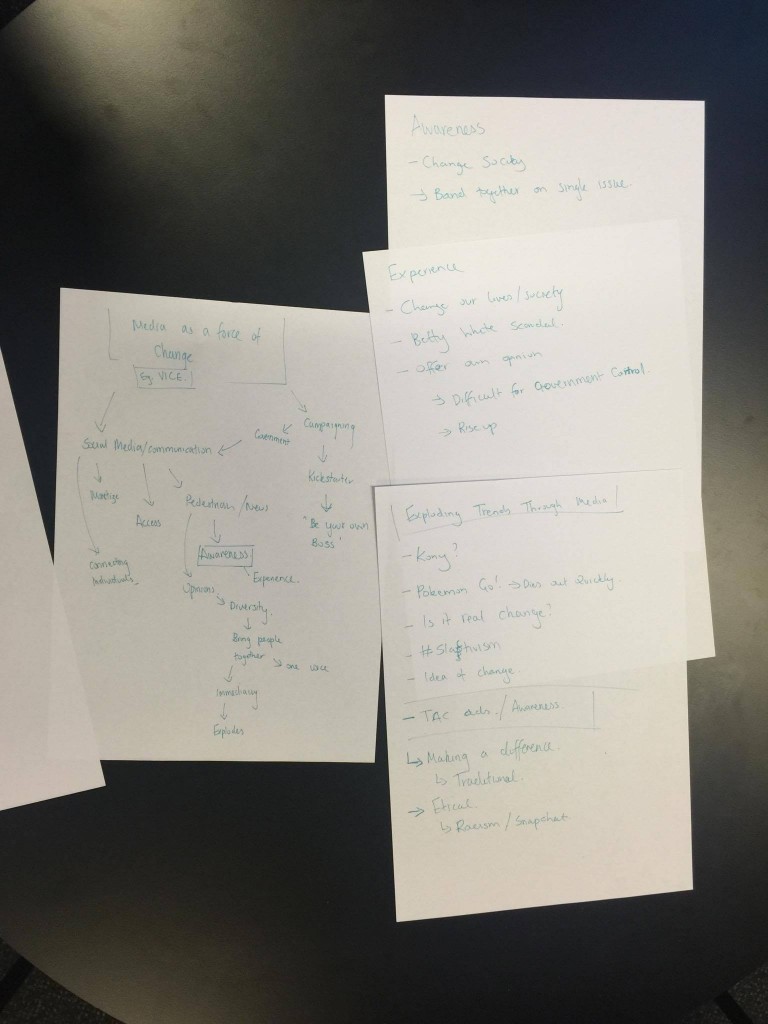Signal’s umbrella idea involved the word OBSESSION, an object, theme or story we desperately wanted to tell to the public. For my theme, I played on an idea derived from Lewis Carroll (Charles Lutwidge Dodgson) in his book “Alice in Wonderland”, I was fascinated by the idea of world inside a world, or in this case a small universe inside the walls of the Signal building. This connected with reoccurring motif of Alice growing and shrinking, pushing up against walls and trying to escape from tiny spaces. I combined this idea with the thought of loneliness and confinement from reality, being hidden away inside of a fantasy world where nothing is as it seemed to the viewer.

Carroll’s book has always been associated with “Memory, language, and consciousness” (D.Robson, 2015), many of it’s themes and stories being directly linked to the idea of madness and insanity. I discovered that back in 1955 a psychiatrist, Jason Todd, found that many of his patients reported a feeling that was similar to Alice’s growing conundrum, a condition dubbed Alice in Wonderland Syndrome. Most common in little children, they reported seeing the room upside down, people who were standing next to them could be seen across the room and the feeling of their bodies expanding or contracting (micropsia (objects appear too small) and macropsia (objects appear too large)). I wanted to pinpoint that exact feeling of pressure and exposure, becoming trapped inside the four walls of a building, a feeling that was ultimately psychological – “They were almost too embarrassed. People want to be told that they’re not crazy.” (H. Stapinski, 2014). While I originally wanted to incorporate a singular model interacting with a glass screen into my shot and play that on micropsia, I soon discovered that it would be too difficult to create that fourth wall I wanted with the glass screen. I wasn’t able to find a sheet of glass large enough to give the effect I intend it to, so I changed my idea and decided to position three different models throughout the four different shots I wanted. Also, instead of having a full body shot, I switched to portrait but still kept the element of interaction.
However with the introduction of multiple models came the idea of isolation. When an individual is a singular display on the screen it is the primary target of audience members, but if you bring multiple model into the image then viewers will expect them to somehow interact in one way or another. I decided that for my models, they will all be separated by the borders of the Signal windows, each window has a dark border and thus will provide a wall between each person.



Isolation itself is both a physically and mentally harrowing experience for individuals, once again playing on the idea of psychological illusion and madness, isolation caused “hallucinations… bizarre scenes, such as squirrels marching with sacks over their shoulders or processions of eyeglasses filing down a street. They had no control over what they saw” (M. Bond, 2014). It seemed only logical to mix both Carroll’s “Alice in Wonderland” with the theme of isolation, both conformed on the idea of mental instability and the unreliability of our memories and senses themselves.
For my soundscape I looked into augmented 4ths in music, also know as the Devil’s Interval. Not specifically associated with Satan himself, the triad causes a dissonance between the two notes and gave an ugly sound, gaining it’s name from the Church when music was primarily used for Hymns and songs referring to God. Used only “by composers when they want to create an atmosphere of evil or dread” (G. Veith, 2011) I believed that it was only fitting to use such a morbid and organic tone to accompany my visuals (although not related). The only real issue I had with the sound was the form, have a three channel system did complicate my soundscape and I would have preferred to have something a little more precise and delicate, hopefully in the future I’ll dedicate some more time to sound editing.
Despite the long processors I’ve gone through, I am happy with my final and finished shots and sounds. The idea behind “Alice in Wonderland” still interests me greatly and I know that there are still many different themes and motifs I have not explored behind the book and it’s hidden meanings. Overall it’s been amazing showcasing my work in a space like Signal and I wish to continue expanding behind my ideas in the future, not only for class but also as a personal experiment.
References
H. Stapinski, 2014. I Had Alice in Wonderland Syndrome. [ONLINE] Available at: http://well.blogs.nytimes.com/2014/06/23/alice-in-wonderland-syndrome/?_r=0.
M. Bond, 2014. How extreme isolation warps the mind. [ONLINE] Available at:http://www.bbc.com/future/story/20140514-how-extreme-isolation-warps-minds.
D. Robson, 2015. Five things Alice in Wonderland reveals about the brain. [ONLINE] Available at: http://www.bbc.com/future/story/20150225-secrets-of-alice-in-wonderland.
J. Veith, 2011. The Devil’s interval. [ONLINE] Available at:http://www.patheos.com/blogs/geneveith/2011/07/the-devils-interval/.
Liua, Liua, Liu, Liu, 2014. “Alice in Wonderland” Syndrome: Presenting and Follow-Up Characteristics. Pediatric Neurology, Volume 51, Issue 3, Pages 317–320.




